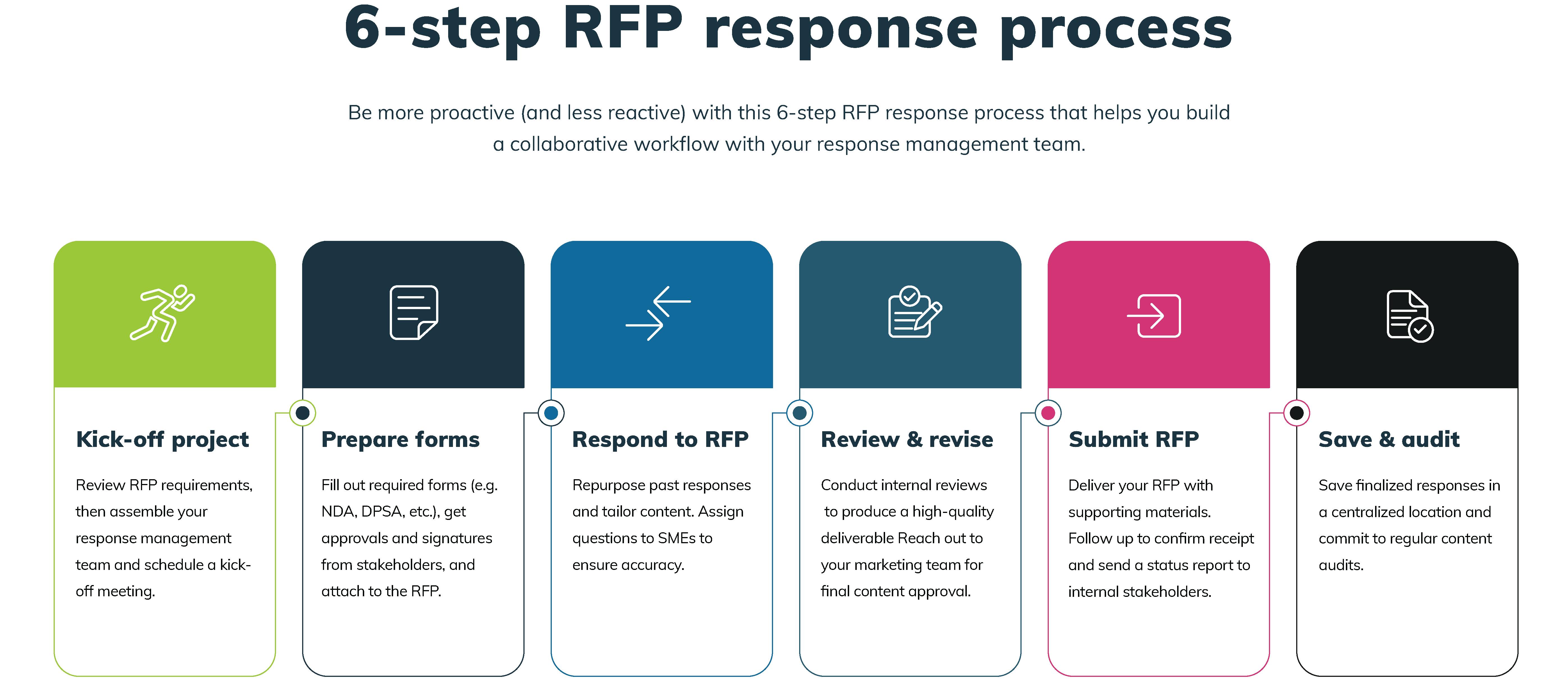An RFP response may not seem like the quickest path to achieving sales success. But what if we told you there was a way to exponentially increase the odds of that RFP putting money into your pocket? And what if you could submit higher quality RFPs faster, raising the opportunity to land more deals?
No, we don’t have a magic wand, but it comes close. Modern technology is pretty amazing, and it’s that kind of wizardry we’re talking about. Data and analytics, driven by powerful AI capabilities, provides sales organizations with a new game plan—business intelligence.
How does business intelligence help you sell smarter in the request for proposal process? With data-driven RFP process management, you and your sales team gain intelligent tools to shorten the sales cycle, close more deals, and save time.
What is data-driven RFP process management?
For any organization, the RFP process must be a thoughtful, well-coordinated effort. When you leverage data analytics and business intelligence, rather than spinning your wheels, you advance your process. You evolve RFP project management into data-driven RFP process management.
Data-driven RFP process management ensures your time is well-spent on carefully selecting business opportunities and balancing resources to craft winning RFPs.
- You assess incoming bids to determine if the organization is a good fit before you allocate time and resources to responding to the RFP.
- Your proposal managers clearly estimate and predict the time needed for various tasks and deliverables to effectively schedule, allocate resources, and distribute workloads.
- Your Content Library is always in good health, providing accurate, marketing-approved content for use throughout the sales process—even beyond RFPs.
86% of salespeople are looking for opportunities to shorten the sales cycle and close more deals. Besides giving you more qualified opportunities, data-driven RFP process management saves everyone time. The request for proposal process is transformed into a well-oiled machine.

Powerful analytics for your request for proposal process
You want to submit the best RFP to your prospects and win more business from your organization’s collective effort. However, your entire livelihood is dictated by the sales cycle—time is always money in your world.
These analytics and reporting tools in RFPIO will help you accomplish your most ambitious sales goals with greater efficiency.
1. Intake management
Business intelligence is the key to excellence during intake management. Analyzing trends and/or past responses to similar RFPs informs business decisions. Trend analysis offers responders a detailed win/loss analysis and creates visibility into which deals your organization is winning—targeting the most worthwhile RFPs and improving the odds for a win.
2. Executive dashboard
The executive dashboard is the birds-eye view of your RFP process. Review historical data for patterns of success and opportunities for improvement. This analysis precipitates decision-making. Sales executives and proposal managers determine any resources needed to improve the RFP process for your team.
3. User report
The user report shows the bandwidth of the entire response management team. Is someone being overwhelmed and overworked? Maybe that’s you. Your RFP response workload—assigned questions and sections for responding and/or reviewing—are visible. If you need resource support, the user report helps you make a case to your proposal manager and executive team.
“Some people call this artificial intelligence, but the reality is this technology will enhance us. So instead of artificial intelligence, I think we’ll augment our intelligence.”
—Ginni Rometty
CEO of IBM
4. Trend analysis
When you create a new project (RFP, RFI, etc.), click on “Analyze Trends” and you’ll see a trend analysis that shows past resource requirements for similar projects. Trend Analysis helps you understand how many days similar projects have taken to complete.
Additionally, this feature shows how many questions have been answered using auto-response/stored answers versus manual responses, which also provides insight into ROI. Combine the trend analysis with the user report to ensure resources (that includes you!) are allocated properly.
5. Answer library report
Answer library reporting helps your organization build and maintain a healthy content repository. This report allows you to audit your content from a holistic view. You know how much content is currently in a review cycle, how much content is overdue with reviewers, and how much content has been assigned to moderators. Answer library reporting makes it easier to keep your best content up-to-date, so you can quickly respond to RFPs with current and relevant information.
6. Activities report
Team members across departments respond to RFPs. The activities report is your audit history for the entire system. You can filter by date range or by user—and by entity to see what type of change was made to the Content Library. If a mistake was made, you’ll find the edit history here in the activities report so you can correct it.
AI proposal software: Helping you work smarter
Artificial intelligence is everywhere. Your entire online experience is propelled by recommendations and advertising based on your historical data. Smartphones and GPS plan your day and navigate your path.
How does AI transform the world of RFP response? AI proposal software isn’t the way of the future…it’s already happening.
Artificial intelligence systems are the man behind the curtain in the aforementioned data and analytics tools. AI drives the business intelligence used for win/loss analysis, which helps your organization make informed decisions about RFP intake management and process planning.
AI proposal software automates repetitive tasks, such as exporting and formatting documents. The answer recommendation engine automates content as well, producing basic boilerplate responses and answering common questions.
In combination with data-driven RFP process management, AI proposal software helps you work faster and smarter on RFPs. By moving quickly and intelligently, you shorten the sales cycle, maximize every RFP opportunity, and gain the time and energy to focus on the next big deal.
Business intelligence helps sales organizations make better decisions, increase sales performance, and save valuable time. When your sales team operates with data-driven RFP process management, you’ll have the winning advantage. Leverage the power of data-driven RFP process management.
